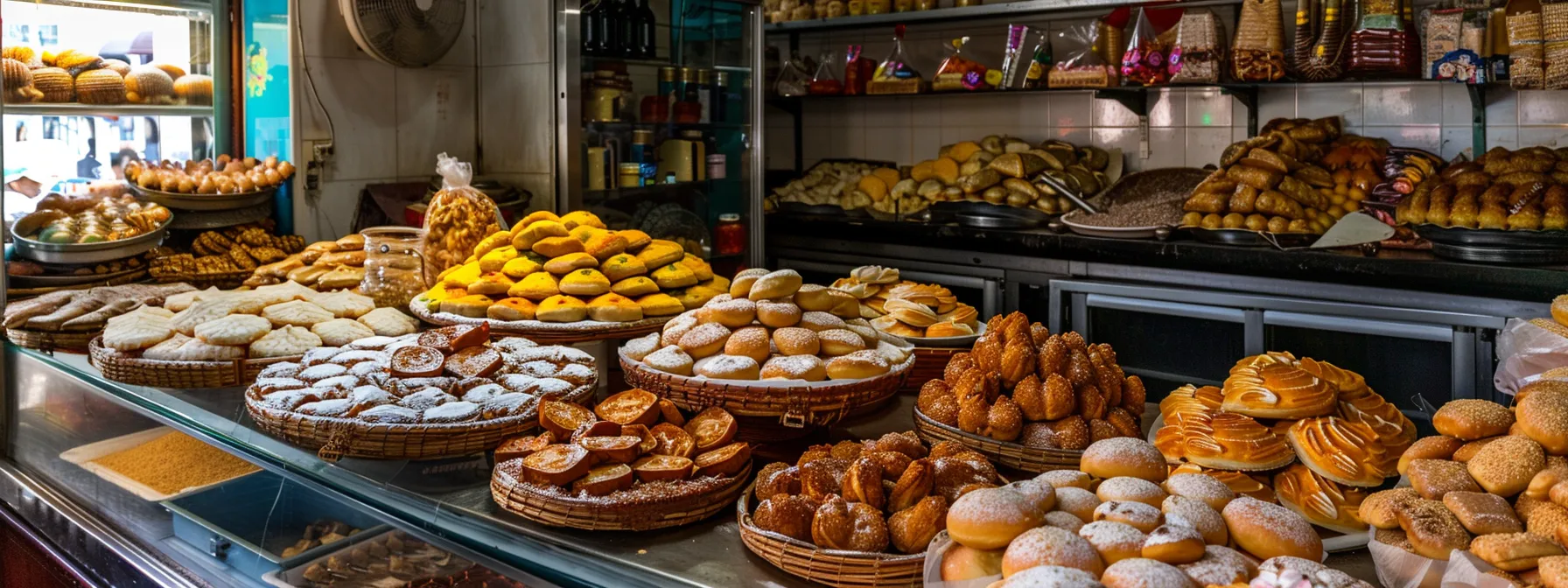Are your smart home devices constantly losing connectivity? You’re not alone. Many users face frustrating issues with home automation, often due to common problems like weak Wi-Fi signals or improper device configurations. In this article, I will cover effective strategies for fixing these connectivity issues, including optimizing your Wi-Fi network and ensuring your devices are properly configured. By addressing these pain points, you’ll gain reliable internet access for your smart devices, enhancing your overall experience with home automation. Let’s dive into the solutions that can help you regain control over your smart home.
Understanding Common Causes of Connectivity Issues

Identifying signs of connectivity problems is the first step in troubleshooting smart home devices. I often evaluate network coverage and signal strength, considering factors like beamforming and backhaul capabilities of my wireless router. Additionally, recognizing device compatibility concerns, including firmware and authentication issues, is crucial for ensuring seamless operation. Each of these aspects plays a vital role in maintaining a reliable smart home network.
Identifying Signs of Connectivity Problems
When I notice my smart devices, like the doorbell or Amazon Echo, are unresponsive or slow to react, it often signals connectivity issues. I pay close attention to the performance of my thermostat as well; if it fails to adjust temperatures promptly, it may indicate a weak signal, especially if I’m using a 5G network. Recognizing these signs early helps me troubleshoot effectively and maintain a seamless smart home experience.
Evaluating Network Coverage and Signal Strength
To effectively evaluate network coverage and signal strength, I often use my mobile app to check the performance of my router. This allows me to identify any weak spots in my home where devices like the Nest thermostat may struggle to connect. By ensuring that my wireless network is strong throughout my living space, I can enhance the responsiveness of my smart devices and minimize connectivity issues.
Recognizing Device Compatibility Concerns
Recognizing device compatibility concerns is essential for addressing connectivity issues in my smart home setup. For instance, when integrating devices with HomeKit, I ensure they support the necessary protocols and are on the same VLAN to avoid bandwidth conflicts. If a device struggles to connect to my wireless network, it may be due to outdated firmware or incompatibility with other devices, which can significantly impact overall performance.
Checking and Optimizing Your Wi-Fi Network

Verifying Wi-Fi network settings is essential for ensuring my smart home ecosystem operates smoothly. I focus on positioning routers for maximum coverage, which helps devices like my smart home hub and Zigbee gateway maintain strong connections. Securing my Wi-Fi network against intrusions is also a priority. Additionally, I explore utilizing Wi-Fi extenders or mesh networks to enhance automation and connectivity throughout my home.
Verifying Wi-Fi Network Settings
When I verify my Wi-Fi network settings, I start by checking the modem configuration to ensure it’s functioning correctly. I pay attention to the IP address assigned to my devices, as this can affect connectivity; ensuring that devices are on the same subnet is crucial. Additionally, I often explore port forwarding options for specific smart devices, which can enhance their performance, especially when using USB-connected devices that require stable connections across different frequencies.
Positioning Routers for Maximum Coverage
When positioning my Linksys router for maximum coverage, I prioritize central locations in my home, away from walls and obstructions. This strategic placement helps ensure that the Wi-Fi signal reaches all corners of my space, reducing the need for troubleshooting connectivity issues with my smart devices. I also avoid placing the router near electronic devices that may cause interference, such as microwaves or cordless phones, to maintain a strong and stable connection throughout my smart home ecosystem.
Securing Your Wi-Fi Network Against Intrusions
Securing my Wi-Fi network against intrusions is a top priority to protect my smart home devices from unauthorized access. I regularly update my router’s firmware and change the default login credentials to something more secure. Additionally, I enable WPA3 encryption whenever possible, as it provides enhanced security for my network, ensuring that my devices remain connected and safe from potential threats.
Utilizing Wi-Fi Extenders or Mesh Networks
Utilizing Wi-Fi extenders or mesh networks has significantly improved my smart home device connectivity. When I noticed dead zones in my home where devices struggled to connect, I decided to invest in a mesh network system. This setup not only expanded my Wi-Fi coverage but also provided a more stable connection for all my smart devices, ensuring they operate seamlessly without interruptions.
Ensuring Smart Devices Are Properly Configured

Ensuring Smart Devices Are Properly Configured
To maintain optimal connectivity for my smart home devices, I focus on several key areas. First, I ensure that devices are connected to the correct network frequency, which can significantly impact performance. Next, I configure device settings for optimal operation, synchronize time and dates across devices, and verify account and authentication credentials. Each of these steps is essential for a seamless smart home experience.
Connecting Devices to the Correct Network Frequency
Connecting my smart devices to the correct network frequency is crucial for optimal performance. I typically choose the 5GHz band for devices that require higher speeds, like streaming cameras, while I use the 2.4GHz band for devices that need better range, such as smart bulbs. By ensuring each device is on the appropriate frequency, I can significantly reduce connectivity issues and enhance the overall functionality of my smart home ecosystem.
Configuring Device Settings for Optimal Performance
Configuring device settings for optimal performance is essential for ensuring my smart home devices function effectively. I make it a point to regularly check and adjust settings such as device updates, which can enhance performance and security. Additionally, I ensure that each device is set to the correct operating mode, whether it’s energy-saving or performance-focused, to align with my usage needs and improve overall connectivity.
Synchronizing Time and Dates Across Devices
Synchronizing time and dates across my smart devices is a critical step in ensuring they function correctly. I often find that discrepancies in time settings can lead to issues with automation schedules, such as lights not turning on or off as intended. By regularly checking and updating the time settings on each device, I can maintain a cohesive smart home environment, reducing connectivity problems and enhancing overall performance.
Verifying Account and Authentication Credentials
Verifying account and authentication credentials is a critical step in ensuring my smart devices connect seamlessly to my network. I regularly check that my login information is accurate and that any two-factor authentication settings are properly configured. This attention to detail helps prevent connectivity issues that can arise from incorrect credentials, allowing my smart home devices to function reliably and efficiently.
Updating Device Firmware and Software

Updating Device Firmware and Software
Checking for the latest firmware updates is essential for maintaining the performance of my smart home devices. Outdated software can lead to connectivity issues and security vulnerabilities. I focus on performing updates safely and efficiently to ensure my devices operate smoothly. Each of these steps is crucial for enhancing the reliability of my smart home ecosystem.
Checking for the Latest Firmware Updates
Checking for the latest firmware updates is a critical step in maintaining the performance of my smart home devices. I regularly access the manufacturer’s app or website to ensure that each device is running the most current software version. This practice not only enhances connectivity but also addresses potential security vulnerabilities, allowing my smart home ecosystem to function reliably and efficiently.
Understanding the Impact of Outdated Software
Outdated software can significantly hinder the performance of my smart home devices, leading to frustrating connectivity issues. I’ve experienced instances where devices fail to respond or operate erratically due to not having the latest firmware updates. By regularly checking for and applying these updates, I not only enhance the functionality of my devices but also protect my smart home ecosystem from potential security vulnerabilities that outdated software may expose.
Performing Updates Safely and Efficiently
When performing updates for my smart home devices, I prioritize a systematic approach to ensure safety and efficiency. I always back up device settings before initiating any firmware updates, which protects my configurations in case something goes wrong. Additionally, I make sure to perform updates during off-peak hours to minimize disruptions, allowing my devices to reboot and reconnect without affecting my daily routines.
Managing Network Interference Problems

Managing Network Interference Problems
Identifying sources of interference in my home is essential for maintaining strong connectivity with my smart devices. I often adjust Wi-Fi channels to reduce conflicts and ensure a clearer signal. Additionally, minimizing obstacles between devices and routers helps enhance performance. Each of these strategies plays a crucial role in optimizing my smart home network and preventing connectivity issues.
Identifying Sources of Interference in the Home
Identifying sources of interference in my home is a critical step in resolving connectivity issues with my smart devices. I often find that common household items, such as microwaves, cordless phones, and even thick walls, can disrupt Wi-Fi signals. By systematically assessing my environment and relocating devices or adjusting router settings, I can significantly improve the performance of my smart home network and ensure a more reliable connection for all my devices.
Adjusting Wi-Fi Channels to Reduce Conflicts
Adjusting Wi-Fi channels is a practical step I take to reduce conflicts and enhance connectivity for my smart home devices. I often use my router’s settings to switch to a less crowded channel, especially in areas with many neighboring networks. This simple adjustment can significantly improve the signal quality, allowing my devices to communicate more effectively and reducing frustrating connectivity issues.
Minimizing Obstacles Between Devices and Routers
Minimizing obstacles between my smart devices and routers is essential for maintaining a strong and stable connection. I often rearrange furniture or relocate devices to ensure a clear line of sight, as physical barriers like walls and large appliances can significantly weaken the Wi-Fi signal. By creating an unobstructed path, I enhance the performance of my smart home devices, reducing connectivity issues and ensuring they operate smoothly.
Resetting Devices and Networks for Optimal Performance

Resetting Devices and Networks for Optimal Performance
Soft resetting devices can often resolve minor connectivity issues, restoring functionality without losing settings. In cases where problems persist, I consider performing a factory reset to return devices to their original state. After a reset, reconfiguring devices is essential to ensure they connect properly to my network. Each of these steps is vital for maintaining a reliable smart home experience.
Soft Resetting Devices to Resolve Minor Issues
When I encounter minor connectivity issues with my smart home devices, I often start by performing a soft reset. This simple action can resolve many temporary glitches without affecting the device settings. For example, when my smart light bulbs become unresponsive, a quick soft reset usually restores their functionality, allowing them to reconnect to my network seamlessly.
Performing Factory Resets When Necessary
When I encounter persistent connectivity issues with my smart home devices, performing a factory reset often becomes necessary. This process restores the device to its original settings, eliminating any glitches or misconfigurations that may be causing problems. After a factory reset, I take the time to carefully reconfigure the device, ensuring it connects properly to my network and operates as intended, which ultimately enhances the reliability of my smart home ecosystem.
Reconfiguring Devices After a Reset
After performing a reset on my smart home devices, I take the time to carefully reconfigure each one to ensure optimal connectivity. I start by connecting them to the correct Wi-Fi network and entering the necessary authentication credentials. This step is crucial, as I’ve found that even minor errors in setup can lead to ongoing connectivity issues, impacting the overall performance of my smart home ecosystem.
Conclusion
Effective strategies for fixing smart home device connectivity issues are essential for maintaining a seamless and reliable smart home experience. By evaluating network coverage, ensuring device compatibility, and optimizing Wi-Fi settings, I can significantly enhance the performance of my devices. Regularly updating firmware and managing network interference further contribute to a stable environment for my smart technology. Implementing these actionable insights not only resolves connectivity problems but also maximizes the functionality of my smart home ecosystem.
























